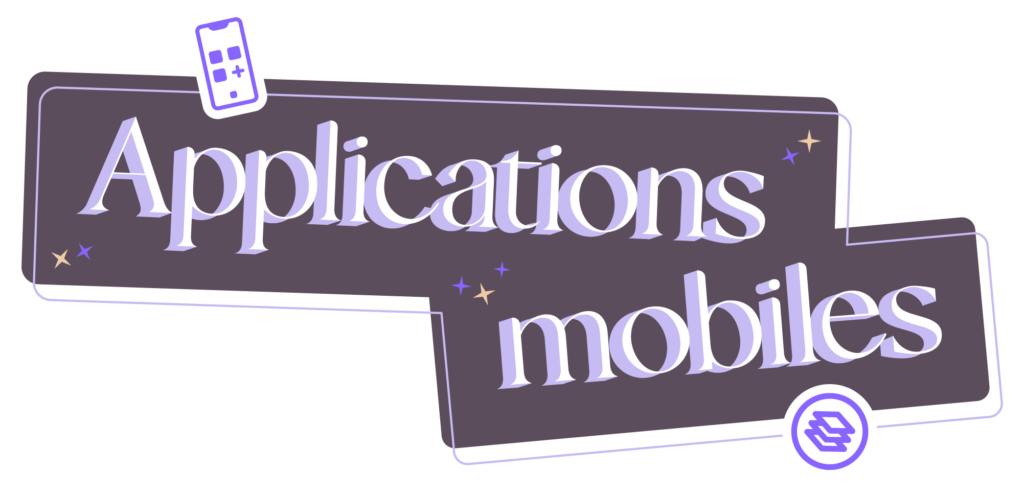
Imagining a mobile application project can sometimes pose tricky dilemmas. On the one hand, Progressive Web Apps (PWA) offer a modern, flexible approach, while on the other, native apps stay true to the post to offer your users a more robust experience. The persistent question remains: which path should you choose for your project?
Let’s take a closer look at web and native applications, their differences, and their possibilities for your project!
Native Apps VS Web Application
What is a “native” mobile application?
A “native” mobile application is one developed specifically for a mobile operating system, usually Android or IOS.
Its main features?
- The code language is different depending on the operating system. This implies development in several languages if you want to offer it in several app stores.
- To be used, the native application must be downloaded from an application store (Play Store, App Store, Microsoft Store…).
- This means that native applications generally have offline functionality, so that you can still access their features even without a mobile network!
It has access to all phone functions, unlike a PWA, which can only access certain phone functions.
What is a web application, or PWA?
Considered to be the future of mobile applications, Progressive Web Apps have facilitated the Web > Mobile transition for many users. Here’s a closer look at these applications that transfer all the power of the web… directly to your mobile!
A web application, or “web app”, is a version of a web page that has been optimized for use on a smartphone. However, it remains adaptable to any type of device, which is its strength!
Its main features?
- One development for all your devices! A single development is all you need for any operating system, which means a significant reduction in your application budget!
- You don’t need to download it to use it. The web application is hosted on a server and can be accessed via a web browser. You just need to be logged in to access it!
- It appears as a search result in traditional search engines. The advantage? It enables better referencing and optimizes your SEO in the right direction!
What’s most important? The user experience is enhanced thanks to significantly reduced loading times, excellent performance and low-network capability. 🚀
Native application and PWA: what’s the difference?
There are many nuances between Progressive Web Apps (PWAs) and native applications. Here’s a summary of the differences that might make you choose one or the other:
- The type of development is different between the two. As mentioned above, a native application is developed according to the operating system on which it will be hosted, whereas a web application adapts to all operating systems!
- The difference in development costs between a native application and a web application. As you may have gathered, a native application is more expensive, since it requires different development for each operating system.
- The hosting provider is not the same. A native application is offered in the operating system’s application store (Google Play, App Store, etc.), unlike a PWA, which is available with a URL from a web browser. However, it can be made available on the Play Store, thanks to the notion of “Trusted Web Activities”.
- In terms of SEO, a PWA can optimize SEO like a website, since it has a URL! A native app has to pay to be well referenced in the app catalog.
- A PWA is more inclusive than a native application because it doesn’t require downloading. It adapts more easily to different OS versions, unlike native applications which sometimes become incompatible.
- A native application has the advantage of accessing all the phone’s features, unlike a web application, which will have to make do with just a few. But this is gradually evolving, with PWAs having more and more possible access to devices.
- A native application also requires a download to be installed on your device, unlike a PWA. It is therefore necessary to have free storage space to accommodate a native application.
- Updates are made automatically for a PWA, without the user having to intervene. For native applications, users have to update themselves via the store from which they downloaded their application.
The web world is changing ! For the past few years, Trusted Web Activity has made it possible to submit a PWA to the Play store (Android) and offer it as a downloadable application. This means you can enjoy the benefits of PWA directly on your mobile – even offline, if required!
For iPhone owners, PWAs can currently be installed via Safari, but not yet via the Apple Store. To be continued…
Web or native application: what should you choose for your mobile application project?
Web and native applications meet different needs, depending on your objectives, your users and your budget !
Native application development is best suited to complex projects (3D, video games, augmented reality, advanced design…) or applications requiring communication with other applications (Google fit/ Apple Health, Calendar, Apple music…).
PWAs are ideal for companies looking for a clear, fast, interactive mobile interface at low cost. Web application deployment is fast. They also come with a URL, enabling them to increase their SEO in search engines and not pay for SEO!
In short, there’s no single answer to the question “PWA or native application?”. The choice depends on the specific needs of your project!
To read our latest PWA case study, click here!
Not sure which to choose: web or native application?
The web agency is here to advise you 😉 ! Don’t hesitate to contact us to build your project together!